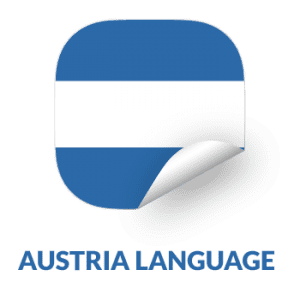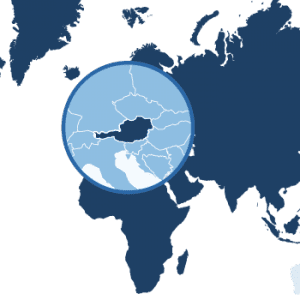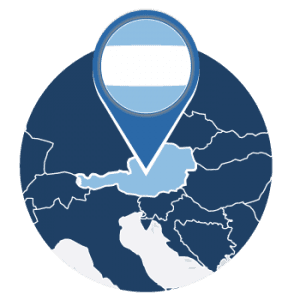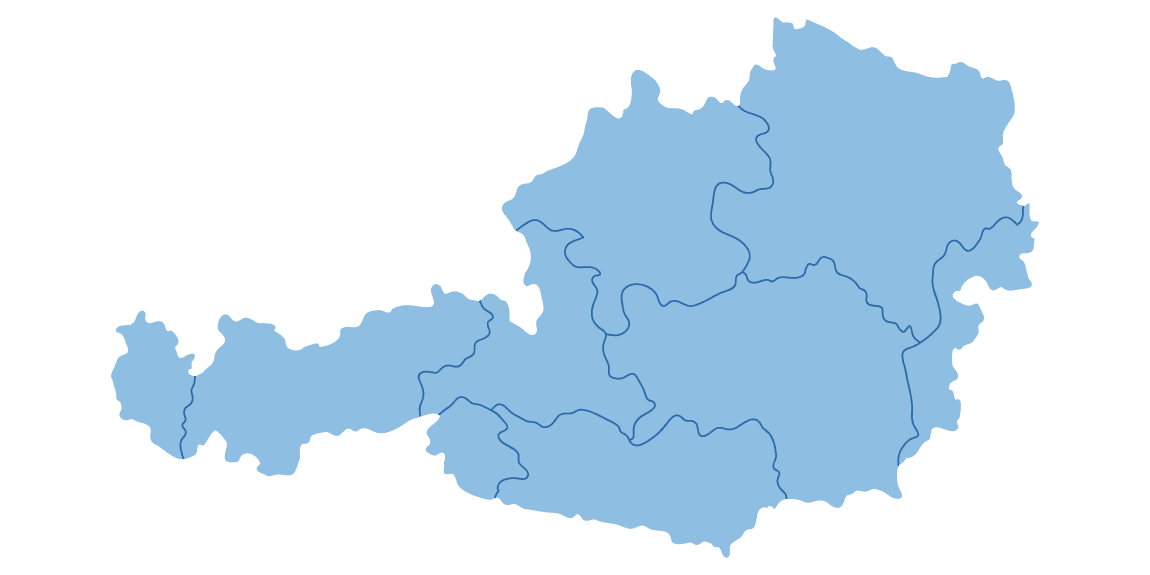Austria – Largest Country in Europe
Austria is the 9th largest country in Europe, and it has a population of about 8.5 million people. Austria’s linguistic diversity has been influenced by the country’s ethnic composition. It’s also home to quite a few languages, with Austrian German being the most widely spoken one and the official language of the country, according to its constitution. The language barrier may be the most challenging obstacle for foreigners moving to Austria. But what other languages are spoken in Austria? And why do some Austrians feel so strongly about protecting their mother tongue? We’re here to help you understand this exciting culture, so let’s dive in!
The dominant languages are spoken in Austria.
Austrians speak three languages. The German Language was derived from two dialects, Alemannic and Bavarian. The former originated in southern Germany and northern Switzerland; it’s spoken by most Austrians.
Meanwhile, Bavarian was developed by southern Germans living near and around Munich; it’s also commonly used across rural Austria (where many of these speakers migrated to during World War II). However, both dialects are mutually intelligible—the difference between their vocabularies is negligible. Austrian German also contains some vocabulary that differs from Standard German.
For example, Kuchen (cake) is commonly referred to as Guglhupf or Krapfen. Most Austrians can understand Standard German when they hear it, but they might have difficulty speaking it without an Austrian accent. In addition to those two significant dialects, a small minority of Austrian Jews speaks Yiddish.
Facts about German
German is a West Germanic language. It derives most of its vocabulary from words of that group of languages. However, it has also taken loanwords from Italian, French, and English (notably from specialized fields like science and technology). Thus it contains more Romance-derived words than everyday English does. Around 95% of German speakers live in Europe.
There are roughly 100 million native speakers of German worldwide, with around 8 million people who speak it as a second common language. The largest groups outside Europe are found in North America and Australia. In Africa, some populations speak German as a first language; however, there are no significant communities within Africa where German is spoken by large numbers of people.

German is the official language of Austria, Belgium, Germany, Liechtenstein, Luxembourg, and Switzerland. It used to be an official language of South Africa until 1991, when Afrikaans was declared co-official. German is one of 23 official languages of Switzerland and one of six official languages of South Tyrol (Italy). German is also one of the 24 official languages of Bosnia and Herzegovina. The major German dialects are High German, Low German, and Alemannic.
The official national languages of Austria
In addition to German, three regional languages are recognized as the official minority language: Burgenland Croatian and Slovene. This diversity has shaped a society that is among Europe’s most vibrant when it comes to literature, theater, music, and other forms of cultural expression. There are also numerous smaller linguistic groups, including Czechs, Croats, Italians, and Turks.
The number of people who claim fluency in at least one non-Austrian language is very high compared with other European countries (over 50 percent). English speakers will have no problems communicating with locals or finding information on travel destinations or local attractions. German travelers may be surprised by how many Austrians speak decent German; However, most Austrians prefer using their native tongue for day-to-day interactions; English is generally well understood throughout urban areas.
German Dialect
Around 130 million people worldwide speak German as their native language. There are nine dialects of German that are spoken in Austria. They are Alemannic, Bavarian, Central Austro-Bavarian, East Alpine, East Central Austro-Bavarian, High Alemannic, South Austro-Bavarian, West Central Austro-Bavarian and Wienerisch (Viennese). While they all share similarities with standard German, they also have unique characteristics.
The most commonly spoken dialect is called Austrian Standard German, which is based on a combination of Central Austro-Bavarian and High Alemannic. This particular version was chosen as it was considered most neutral for everyone to understand across all regions of Austria.

However, even within Austrian Standard German, there are many variations depending on the region or location within a city or town. For example, one person may say Zehn Uhr while another says zehn oder while someone else says zehn uhr. All three versions mean ten o’clock but sound very different from each other. Another example would be how people refer to their cars; some people say Auto while others prefer Wagen or even just plain old Car!
Austro-Bavarian Dialects
The Austro-Bavarian dialects or Bavarian dialects (Austro-Bavarian: Boarisch, pronounced ) are a group of Upper German dialects of the Bavarian group. They are primarily spoken in Tyrol, North and East Tyrol, Vorarlberg, Styria, southern Burgenland, Vienna and Burgenland. Due to the geographic isolation of these Alpine regions, many features of Bavarian have been preserved.
On the other hand, in some areas (notably Vienna), Austrian dialects are used. This unique linguistic situation is due to several factors: In Lower Austria, Carinthia, Styria, and Burgenland, the population was historically bilingual. This led to a diglossia with Austrian German (Hochdeutsch) used for written purposes and Bavarian for everyday speech.
When Austria became a part of Germany in 1938, Standard German replaced Bavarian as an official language. In 1945, it was re-introduced as the official language but now as High German.
After World War II, Austrians tended to speak their local dialects more than High standard German. Many of those who could move away from their home region did so. Dialect remains strong among expatriates and vacationers returning to visit relatives, however. Thus while almost all Austrians can understand Standard German, only about a third can speak it fluently.
Alemannic Dialects
The Alemannic dialects are a group of Germanic dialects spoken in parts of Austria. They are closely related to Swiss German and Low Alemannic and are sometimes referred to as Austrian German. There are three main Alemannic dialects spoken in Austria: Upper Alemannic, Central Alemannic, and Lower Alemannic.
Upper Alemannic is spoken in the northwesternmost part of Austria, in the Vorarlberg region. It is also spoken in parts of Switzerland and Liechtenstein. Central Alemannic is spoken in the Tyrol region of Austria, as well as in parts of Switzerland, Italy, and Germany. Lower Alemannic is spoken in the southernmost part of Austria, in the state of Styria.
The Alemannic dialects are characterized by certain features of pronunciation and grammar. For example, they tend to use the dative case more often than other Germanic dialects, and they have a distinctive way of forming the plural of specific nouns. Alemannic dialects also have several unique words and phrases.
The Alemannic dialects are an essential part of Austrian culture. They are spoken by a significant minority of the population and are used in regional television and radio broadcasts. They are also taught in some schools. Within the country, there are also distinct differences in regional dialects.
Other Major Unofficial Languages are spoken in Austria.
There are many languages spoken in Austria, in addition to the official language of German. These include various dialects of the German language, as well as other languages such as English, Serbian, Turkish, Slovene, Croatian, and Hungarian.
Slovene
One of the most common languages spoken in Austria, in addition to German, is Slovene. This language is spoken by around 2% of the population, primarily in the southeastern region of the country. The Slovene language is spoken in Austria by a minority of the people. There are approximately 36,000 Slovene speakers in Austria, representing around 0.5% of the total population. The vast majority of Slovene speakers in Austria live in Carinthia, making up around 2% of the population.
The Slovene language is one of the 24 official languages of the European Union and is therefore protected under the European Charter for Regional or Minority Languages. In Austria, the Slovene language is used in education, the media, and in some public institutions.
There are three main dialects of Slovene spoken in Austria: Carinthian, Littoral, and Upper Carniolan. The Carinthian dialect is the most widely spoken in Austria, followed by the Littoral dialect. The Upper Carniolan dialect is spoken by a smaller number of people and is mainly found in the province of Carinthia.
Croatian
Another language spoken in Austria is Croatian. This language is spoken by around 1% of the population, primarily in the southern region of the country. The language has been recognized by the Austrian government and is protected under the European Charter for Regional or Minority Languages. There are three main reasons why the Croatian language is essential in Austria.
The first reason is that the Croatian language is an integral part of the country’s heritage. Austria has a long history of immigration, and the Croatian language is one of the many languages brought to the country by immigrants. The Croatian language is also one of the official languages of the European Union, which means that it is an essential language for international communication.
The second reason is that the Croatian language is an integral part of the country’s culture. The Croatian language is used in many aspects of Austrian culture, including literature, music, and film. The Croatian language is also used in some of the country’s schools, an integral part of the education system. We hope you must know the top 20 most beautiful languages in the world.
The third reason is that the Croatian language is an integral part of the country’s economy. The Croatian language is used in many different businesses in Austria, including tourism, banking, and insurance. The Croatian language is also used in some of the country’s government agencies, an integral part of the government.

The top three languages spoken in Austria are German, Turkish, and Serbian. The distribution of languages spoken in Austria is reflective of its history and demographics. In the past, most Austrians spoke German. Still, today, due to immigration from Turkey, Serbia, Bosnia-Herzegovina, Macedonia, Romania, Bulgaria, Hungary, Italy, Poland, and other countries, the number of people who speak foreign languages has increased significantly.
Yes, Austria has its language. Austria’s language is a blend of German and other languages spoken in the country. Austrian German is similar to standard German but with some differences in pronunciation and vocabulary. Other languages spoken in Austria include Turkish, Croatian, and Serbian.
Serbian
The Serbian language is spoken by a minority group in Austria. There are an estimated 20,000 Serbian speakers in Austria, most of whom live in Vienna. The Serbian language has a long history in Austria, dating back to the Middle Ages. Today, Serbian is an official language in Austria and is used in various contexts, from education to business.
One of the most important contexts for the use of Serbian in Austria is education. Serbian is one of the languages of instruction at the University of Vienna and is also used in several primary and secondary schools. In addition, several language schools offer Serbian language courses. This ensures that Serbian speakers in Austria have access to education in their native language.
Another essential context for the use of Serbian in Austria is business. There are several Serbian-owned businesses in Austria, and many of these use Serbian as their primary language of communication. In addition, Serbian is one of the languages of the Austrian Chamber of Commerce. This ensures that Serbian businesses have a voice in the Austrian business community.
Finally, Serbian is also used in various cultural contexts in Austria. There are several Serbian cultural organizations in Austria, and Serbian is used in various cultural events, from concerts to festivals. This ensures that Serbian culture is an integral part of Austrian society.
Hungarian
The Hungarian language is spoken by around 13 million people worldwide, with most speakers living in Hungary. However, there are also significant Hungarian-speaking populations in other countries, including Austria. In Austria, Hungarian is an official minority language in four of the country’s nine states.
One of the reasons why Hungarian is spoken in Austria is due to the country’s history. For centuries, Austria was part of the Austro-Hungarian Empire, a multinational state with a sizeable Hungarian-speaking population. Even after the empire dissolved in 1918, many Hungarians lived in Austria.
Another reason why Hungarian is spoken in Austria is because of the country’s geography. Austria is located in Central Europe, and it shares a border with Hungary. This makes it easy for Hungarians to move to Austria, and it also means that there is a lot of cultural exchange between the two countries.
Also, Hungarian is spoken in Austria because of the policies of the Austrian government. The Austrian government has committed to protecting the rights of minority language speakers, and it has also invested in programs to promote the use of minority languages. This has helped to create an environment in which Hungarian can thrive.

English
The English language is one of the most widely spoken languages globally. In Austria, English is the most commonly spoken foreign language. There are many reasons why English is so important in Austria. One reason why English is so important in Austria is that it is the language of international business. Many Austrian companies do business with English-speaking countries. Therefore, Austrian employees need to be able to communicate in English.
Another reason why English is so important in Austria is that it is the language of tourism. Austria is a popular tourist destination. Many tourists come from English-speaking countries. Therefore, Austrian tourism workers need to be able to communicate in English.
The third reason English is so important in Austria is that it is the language of education. Many Austrian students study English in school. English is also the language of many university courses. Therefore, Austrian students need to be able to communicate in English.
Turkish
Turkish is the most widely spoken minority language in Austria, with over 200,000 speakers. It is an official language in the Austrian state of Vorarlberg and has been recognized as a minority language in the other Austrian states. But Turkish is not the national language of Austria. Turkish is also one of the most popular languages to learn in Austria due to many Turkish immigrants.
Turkish immigrants have been coming to Austria since the 1960s when the Austrian government recruited guest workers from Turkey to help with the country’s economic reconstruction. Today, Turkish immigrants make up the second-largest immigrant group in Austria, after Germans. Most Turkish immigrants live in Vienna, but large Turkish communities in other Austrian cities, such as Graz and Linz. The Viennese dialect is the most well-known, and it has influenced many different dialects.
Turkish is the third most popular foreign language to learn in Austrian schools, after English and French. It is offered as a foreign language option in primary and secondary schools. In addition, several private language schools provide Turkish language courses.
The Austrian government has taken several measures to support the use of Turkish in the country. In addition to recognizing Turkish as a minority language, the government has also provided funding for Turkish language courses and Turkish-language media. In addition, the Austrian city of Vienna has a Turkish-language radio station and a Turkish-language newspaper.
Austrian People
The Austrian people are proud and passionate, with a rich history and culture. They are known for their love of music, art, and food and their warm hospitality. Three things make the Austrian people unique: their love of nature, their dedication to their families, and their strong work ethic.
The Austrian people have a deep love of nature. They are often hiking and skiing in the mountains, passionate about protecting the environment. This love of nature is reflected in their architecture and art, which often features scenes of the Alps.
Family is essential to the Austrian people. They are known for their close-knit families and their dedication to their children. Education is highly valued in Austrian families, and many children go on to attend university.
The Austrian people have a strong work ethic. They are known for their punctuality and their dedication to their jobs. This work ethic is reflected in the high quality of Austrian products, which are known for their durability and craftsmanship.
The majority of people in Austria speak German, but there are also many other languages spoken in the country. The languages spoken in Austria include German, Austrian German, Turkish, Serbian, Croatian, and Hungarian.
Although Austrian and German are both Germanic languages, they are not the same language. There are several differences between Austrian and German, including pronunciation, vocabulary, and grammar.
German is spoken in many countries around the world. German is the official language in Germany, Austria, Switzerland, and Liechtenstein. It is also one of the three official languages of Belgium. German-speaking countries outside of Europe are the USA, Brazil, Argentina, Canada, and Namibia.








